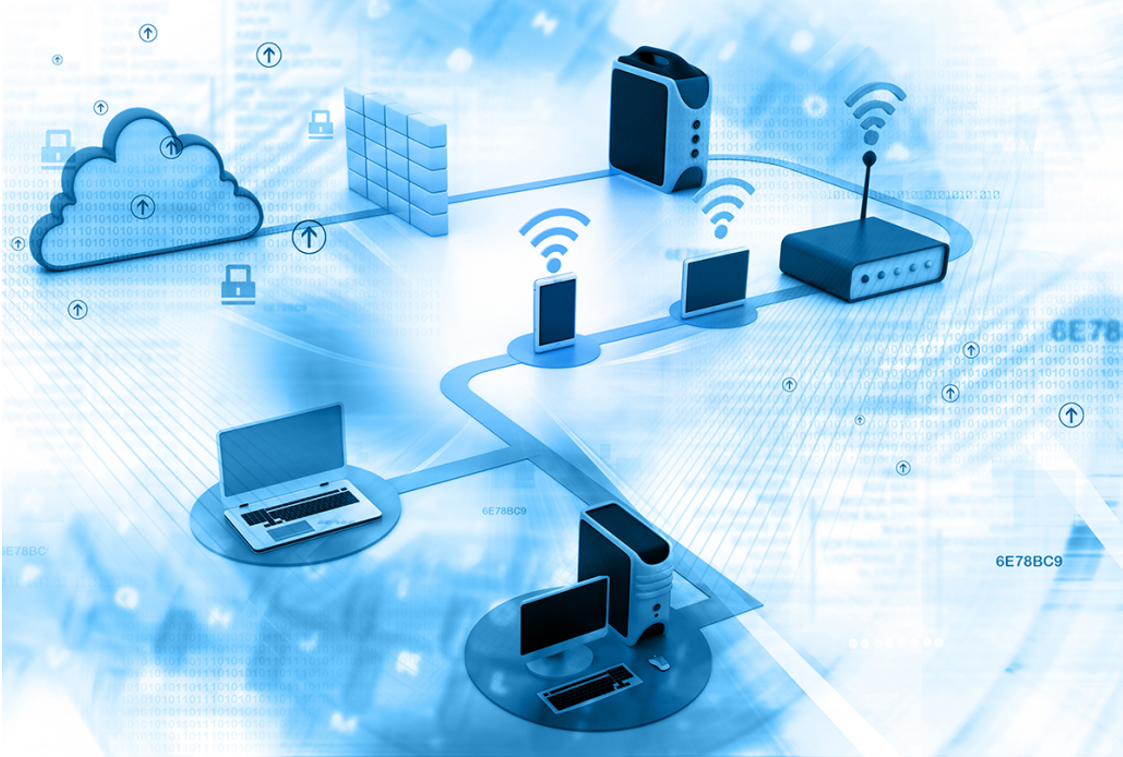How Enterprise Wireless Access Points Differ from Consumer Models
In today’s rapidly evolving digital landscape, seamless connectivity is not just a luxury; it’s a necessity. Whether for a bustling corporate environment or the comfort of home, reliable and high-speed internet access is integral to productivity, communication, and entertainment. As organizations and individuals seek to optimize their wireless networks, understanding the distinctions between enterprise wireless access points and consumer models becomes paramount. Each category serves specific needs and is designed with distinct capabilities, making it essential to choose the right solution for your particular circumstances.
Enterprise wireless access points are engineered to meet the demands of large organizations, combining advanced technology with robust features to support numerous users and devices concurrently. This high-performance architecture is optimized for large-scale deployment, ensuring stable connections even in high-density environments. In contrast, consumer wireless access points aim to provide sufficient connectivity for smaller, household environments, accommodating fewer devices under lighter loads. While consumer models can be sufficient for basic internet usage at home, they often lack the sophistication required for optimal performance in a business setting.
Understanding the differences between these two types of access points goes beyond mere technical specifications; it encompasses various factors including performance, scalability, security, and deployment considerations. This nuanced understanding can significantly impact your decision-making process, shaping your connection experience and ensuring that your network infrastructure meets the evolving demands of users. In a world where connectivity can dictate success, making informed choices about your wireless network setup is essential to achieving desired outcomes.
In this article, we will explore the key differences between enterprise and consumer wireless access points, delving into their features, performance capabilities, security measures, and more. By examining these aspects closely, you will gain insights that empower you to select the best access point solution suited for your needs, whether you’re outfitting a corporate office or enhancing your home network.
Performance and Capacity
When considering performance, enterprise wireless access points excel far beyond their consumer counterparts. Designed to handle high traffic volumes, enterprise models are capable of supporting hundreds of simultaneous connections, making them ideal for organizations that require comprehensive coverage for a large number of users. This performance is achieved through advanced technologies such as Multi-User Multiple Input Multiple Output (MU-MIMO), which allows access points to communicate with multiple devices at the same time, significantly improving overall efficiency and speed in a high-density environment.
Consumer wireless access points, while effective for small households, typically cater to a much lower user capacity. Most consumer models support a limited number of devices—usually in the range of 10 to 50 concurrent connections—before performance issues arise. This becomes particularly relevant in settings where multiple devices are streaming content, participating in video calls, or engaging in online gaming simultaneously. Under heavy load, consumer devices may experience slowdowns or interruptions, leading to user frustration and diminished productivity.
Moreover, enterprise access points are equipped with superior hardware that enhances data handling capabilities. They generally feature higher throughput rates that allow for quicker data transfers, meeting the demands of bandwidth-intensive applications and services. This is especially important in dynamic business environments where real-time communication and collaboration are essential. As organizations adopt more advanced technology, ensuring that your network infrastructure can keep pace with these demands becomes increasingly important, solidifying the case for enterprise wireless access points as optimal solutions for businesses.
Scalability and Deployment
Scalability is another significant factor to consider when evaluating wireless access points. In enterprise environments, the ability to expand and adapt the network as the organization grows is crucial. Enterprise access points are designed for large-scale deployment, supporting interconnected systems that can easily integrate more units as needed. This flexibility allows businesses to expand their wireless coverage without a complete overhaul of their existing infrastructure, ensuring a consistent user experience as workforce demands change.
In contrast, consumer wireless access points are limited in scalability. While they can be expanded to include multiple routers or extenders, doing so often requires additional configurations and results in potential signal conflicts or dead zones. This can be particularly challenging for homes or small offices that constantly evolve, as managing and maintaining network integrity across multiple devices may become cumbersome. Consumer models may not have the sophisticated management tools or capabilities to accommodate such growth effectively, thus limiting their longevity and reliability.
Moreover, enterprise access points frequently come equipped with centralized management solutions that allow IT departments to monitor, configure, and manage multiple access points from a single interface. This streamlines operations, making it easier to troubleshoot issues, deploy updates, and maintain optimal performance across an organization’s network. Consumer access points, on the other hand, usually operate independently, meaning that any adjustments require individual configurations for each device. The contrasting deployment and management capabilities underscore why enterprise models are essential for maintaining a dynamic and responsive network capable of supporting growth and technological advancements.
Security Features
Security is a critical consideration, especially when it comes to managing sensitive information and ensuring robust network protection. Enterprise wireless access points are built with advanced security features designed to protect both user data and network integrity. These features often include enhanced encryption protocols, secure guest access, and advanced authentication methods such as 802.1X, which requires users to authenticate before gaining network access. Such measures are paramount for organizations handling confidential information and seeking to comply with industry regulations and standards.
Consumer wireless access points typically offer basic security features that may not be sufficient for a professional environment. While they may support WPA2 encryption, many consumer models lack the sophisticated authentication mechanisms or management tools necessary to effectively secure larger networks. The simplicity of these devices can lead to vulnerabilities, increasing the risk of unauthorized access and data breaches. As cyber threats continue to evolve, the need for advanced security measures becomes ever more critical, particularly for businesses that cannot afford security lapses.
Furthermore, enterprise wireless solutions often include robust network monitoring and intrusion detection capabilities that help identify and mitigate potential threats. This proactive approach ensures that IT teams can respond to security incidents promptly, minimizing risks associated with cyberattacks. In contrast, consumer models offer limited monitoring capabilities, which may leave users unaware of potential vulnerabilities until after an incident has occurred. For any organization focused on maintaining data integrity and securing sensitive information, the advantages offered by enterprise wireless access points regarding security cannot be understated.
Cost and Return on Investment
When deciding between enterprise and consumer wireless access points, cost is an inevitable factor to consider. Generally, enterprise access points come with a higher upfront price, reflecting their advanced technology, enhanced features, and scalability options. However, investing in enterprise solutions can provide substantial return on investment (ROI) through improved performance, reduced downtime, and heightened user satisfaction. For businesses seeking efficiency and reliability, the initial costs may be justified by the long-term benefits that enterprise models bring to a network environment.
In contrast, the lower cost of consumer access points may seem appealing, especially for individuals or small businesses with limited budgets. While these devices can provide adequate service for minimal connectivity needs, they may incur hidden costs over time. Frequent replacements, added extenders for coverage, or increased IT support due to performance issues can quickly add up. Additionally, as a business grows, the need to upgrade to more robust solutions may require even further investment, countering any initial savings realized from choosing a consumer model.
Ultimately, the choice between enterprise and consumer wireless access points should align with your budgetary constraints, anticipated usage, and long-term growth plans. While initial costs may seem daunting, enterprise access points often deliver a more sustainable solution that can adapt to changing needs over time. In a world where connectivity is essential, considering both immediate expenses and potential future costs will aid in making an informed decision that best supports your objectives, whether at home or within a corporate setting.
Conclusion
In conclusion, the distinctions between enterprise wireless access points and consumer models are pivotal for any organization or individual looking to optimize their network solutions. From performance and scalability to security features and cost considerations, understanding these differences offers valuable insights that can guide informed decision-making. While enterprise access points are designed to handle the demanding requirements of modern workplaces, consumer models often fall short in various critical areas, particularly in environments where stability and security are paramount.
Choosing the right access point goes beyond simply picking one device over another; it involves a thoughtful consideration of performance metrics, user expectations, and long-term growth potential. The investment in enterprise solutions may present higher upfront costs, but the benefits of reliability, superior performance, and advanced security features make them an attractive option for organizations that prioritize efficient operations and data integrity. Conversely, consumer models can fulfill day-to-day connectivity needs for smaller settings, but their limitations in scalability and performance may hinder future developments.
Ultimately, your decision should reflect your current needs while also taking into account your future objectives. A robust, reliable wireless network is an essential asset that will support increasing demands and evolving technologies as digital landscapes continue to change. Regardless of whether you opt for enterprise or consumer access points, properly assessing your specific requirements will empower you to create an efficient network infrastructure capable of enhancing productivity, ensuring secure connections, and fostering a seamless user experience. With technology continually advancing, investing in the right solution today can set the stage for greater connectivity achievements in the future.




